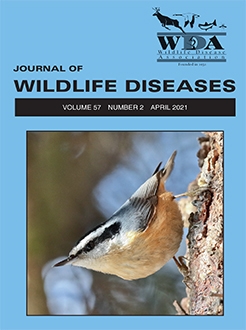In western North America, sylvatic plague (a flea-borne disease) poses a significant risk to endangered black-footed ferrets (Mustela nigripes) and their primary prey, prairie dogs (Cynomys spp.). Pulicides (flea-killing agents) can be used to suppress fleas and thereby manage plague. In South Dakota, US, we tested edible “FipBit” pellets, each containing 0.84 mg fipronil, on free-living black-tailed prairie dogs (Cynomys ludivicianus). FipBits were applied along transects at 125 per ha and nearly eliminated fleas for 2 mo. From 9–14 mo post-treatment, we found only 10 fleas on FipBit sites versus 1,266 fleas on nontreated sites. This degree and duration of flea control should suppress plague transmission. FipBits are effective, inexpensive, and easily distributed but require federal approval for operational use.
How to translate text using browser tools
25 March 2021
Fipronil Pellets Reduce Flea Abundance on Black-Tailed Prairie Dogs: Potential Tool for Plague Management and Black-Footed Ferret Conservation
David A. Eads,
Travis M. Livieri,
Phillip Dobesh,
Eddie Childers,
Lauren E. Noble,
Michele C. Vasquez,
Dean E. Biggins
ACCESS THE FULL ARTICLE

Journal of Wildlife Diseases
Vol. 57 • No. 2
April 2021
Vol. 57 • No. 2
April 2021
Cynomys
Mustela nigripes
pulicide
Siphonaptera
Yersinia pestis





